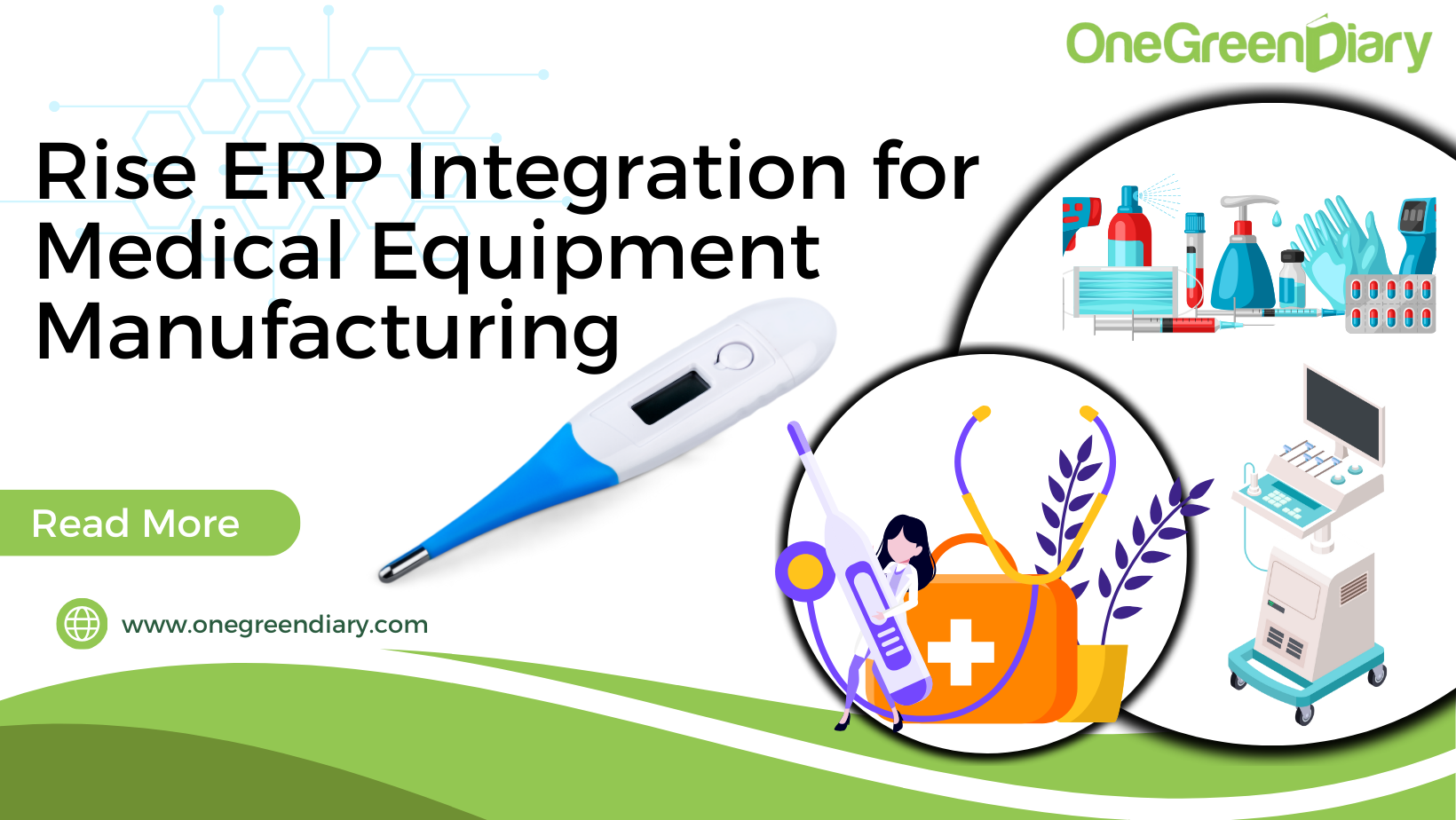Introduction:
In the ever-evolving landscape of medical equipment manufacturing, the quest for efficiency and streamlined operations is paramount to sustaining competitiveness. Recognizing this imperative, businesses are increasingly turning to Enterprise Resource Planning (ERP) systems as strategic tools to bolster productivity, cut costs, and enhance overall organizational efficiency. This blog takes a deep dive into the transformative journey of seamlessly integrating Rise ERP into the realm of medical equipment manufacturing, shedding light on the benefits and challenges encountered during the implementation process.
The Imperative for ERP in Medical Equipment Manufacturing:
The intricate nature of medical equipment manufacturing demands the management of complex processes, strict adherence to quality standards, and compliance with rigorous regulatory requirements. Rise ERP emerges as a comprehensive solution by seamlessly integrating various business functions, including supply chain management, production planning, inventory control, and financial management, into a centralized platform. This integration empowers manufacturers to make informed decisions, optimize workflows, and respond swiftly to market demands.
Key Advantages of Rise ERP Implementation:
1. Enhanced Visibility and Control:
Rise ERP provides real-time insights throughout the manufacturing process, offering stakeholders a comprehensive view of operations. This facilitates better decision-making and improved control over critical processes from procurement to distribution.
2. Efficient Resource Allocation:
Manufacturers can optimize resource allocation with Rise ERP, ensuring the effective utilization of materials, manpower, and machinery. This optimization results in reduced waste, increased operational efficiency, and ultimately higher profit margins.
3. Streamlined Compliance:
Given the highly regulated nature of the medical equipment industry, compliance with industry standards is non-negotiable. Rise ERP helps manufacturers adhere to regulatory requirements through tools for traceability, quality control, and documentation.
4. Improved Customer Relationship Management (CRM):
The seamless integration of CRM functionality within Rise ERP enhances customer satisfaction. By tracking customer interactions, managing inquiries, and ensuring timely deliveries, manufacturers can build stronger relationships and foster customer loyalty.
5. Data-driven Decision Making:
Rise ERP empowers decision-makers with data-driven insights. Advanced analytics and reporting tools aid in identifying trends, predicting market demand, and optimizing production schedules, allowing manufacturers to stay ahead in a dynamic market.
Challenges and Solutions:
1. Resistance to Change:
Employees may resist the shift towards a new system. Comprehensive training programs and effective change management strategies are essential to address this challenge and ensure a smooth transition.
2. Integration Complexity:
Integrating Rise ERP with existing systems and processes can be intricate. Meticulous planning, expert consultation, and phased implementation can help mitigate integration challenges.
3. Data Migration Issues:
Migrating existing data to the new ERP system may pose challenges. A robust data migration plan, data cleansing, and validation processes are crucial to ensuring the accuracy and integrity of data during the transition.
Features of Rise ERP Software for Medical Devices:
In addition to the core benefits, Rise ERP for medical devices offers the following features:
1. Bi-directional Traceability:
Provides forward and backward traceability from source to consumption, ensuring transparency and accountability in the production process.
2. Authenticity Verification:
It enables operators to verify the authenticity of specific transitions, generate corrective actions, and efficiently handle non-conformance processes.
3. Sub-contracted Operations and Supply Chain Management:
Monitors and tracks subcontractor processes, builds strong relationships with partners, minimizes operational costs, and efficiently controls issues.
4. Complete Device History:
Creates a comprehensive device history record (DHR), allowing meticulous attention to the rising cost of production, tooling specifications, patient documents, and packaging & labeling.
5. Post-sale Service and Support:
Integrates CRM capabilities to handle complaints, warranty claims, service contracts, and returns, ensuring a robust post-sale service and support system.
6. Compliance and Quality Management:
Facilitates adherence to high-level quality standards, ensuring that products conform to required characteristics, operational tolerances, and expected results.
7. Transaction Audit Trails and Full-Lot Traceability:
Provides a repository of historical transactions over several years, ensuring full backward and forward lot traceability.
8. Inventory Location Procedures and Advanced Order Fulfillment:
Improves order fulfillment, enabling companies to meet customer expectations on time and enhancing visibility into the supply chain, manufacturing operations, inventory, and market demand.
In summary, implementing Rise ERP in medical equipment manufacturing is a pivotal move toward operational excellence, offering enhanced visibility, streamlined processes, and improved decision-making. Despite challenges during implementation, embracing this transformative technology positions manufacturers for sustained growth and success in a dynamic industry. Rise ERP serves as a revolutionary solution, addressing unique challenges in medical equipment manufacturing and promoting efficiency, compliance, and overall business success.

